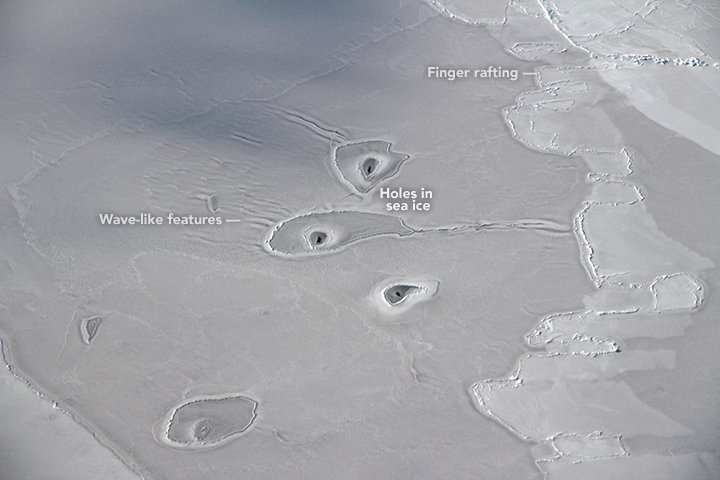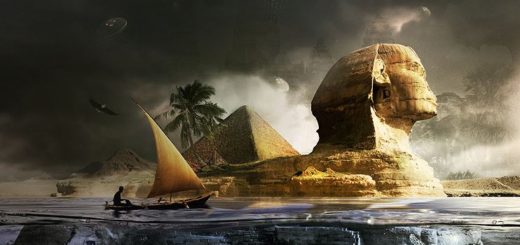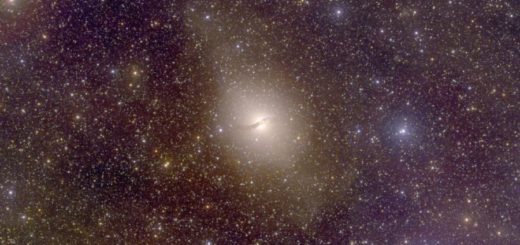Mysterious Ice Circles Discovered In The Arctic Sea Remain Unexplained For Now – NASA Says
During a routine flyover in the Arctic ocean, NASA scientists discovered several unusual ice circles that currently remain unexplained.
IceBridge mission scientist John Sonntag has photographed the bizarre formations and says it is something he has never seen before.
“I don’t recall seeing this sort of thing elsewhere,” NASA reported. The holes were noted about 50 miles northwest of Canada’s Mackenzie River Delta, and although the main purpose of the trip was to make observations of sea ice, somehow the mysterious holes became the highlight of the trip.
Nathan Kurtz, Fellow IceBridge project scientist explained that while he can tell from the image that the holes exist in area of thin ice, he’s still not sure what created them.
“I’m not sure what kind of dynamics could lead to the semi-circle shaped features surrounding the holes. I have never seen anything like that before,” said Kurtz, NASA reported.
Mysterious Ice Circles Discovered In The Arctic Sea Remain Unexplained For Now – NASA Says

Credit: NASA
The features are more of a curiosity than anything else. The main purpose of the flight that day was to make observations of sea ice in an area that lacked coverage by the mission prior to 2013. Still, the image sparked a fair amount of intrigue, so we set out to see what we could learn. That’s not always easy based on a photograph or satellite image alone, so the following ideas are speculation.
Some aspects of the image are easy to explain. The sea ice here is clearly young ice growing within what was once a long, linear area of open water, or lead. “The ice is likely thin, soft, and mushy and somewhat pliable,” said Don Perovich, a sea ice geophysicist at Dartmouth College. “This can be seen in the wave-like features in front of the middle ‘amoeba.’”
See also:
Unknown Process Responsible For Melting Ice In Antarctic – Discovered
Evidence Of Catastrophic Megaflood In Central Mediterranean Sea
More About Earth Changes
Perovich explains there might be a general left to right motion of the new ice as evidenced by the finger rafting on the right side of the image. Finger rafting occurs when two floes of thin ice collide. As a result of the collision, blocks of ice slide above and below each other in a pattern that resembles a zipper or interlocking fingers.
Chris Polashenski, a sea ice scientist at the Cold Regions Research and Engineering Laboratory, said he has seen features like this before, but does not have a solid explanation for them. He agrees that breathing holes for seals is one possibility; equally plausible is that the holes were caused by convection.
At this moment there is only one photograph and the mysterious circles are difficult to explain. Scientists hope they can gather more information about these formations and find out how the circles were created.



 Creators of mankind
Creators of mankind Description of “Tall white aliens”
Description of “Tall white aliens” Where they came from?
Where they came from? About hostile civilizations
About hostile civilizations The war for the Earth
The war for the Earth “Tall white aliens” about eternal life
“Tall white aliens” about eternal life Video: “Nordic aliens”
Video: “Nordic aliens” Aliens
Aliens Alien encounters
Alien encounters The aliens base
The aliens base UFO
UFO Technology UFO
Technology UFO Underground civilization
Underground civilization Ancient alien artifacts
Ancient alien artifacts Military and UFO
Military and UFO Mysteries and hypotheses
Mysteries and hypotheses Scientific facts
Scientific facts


















